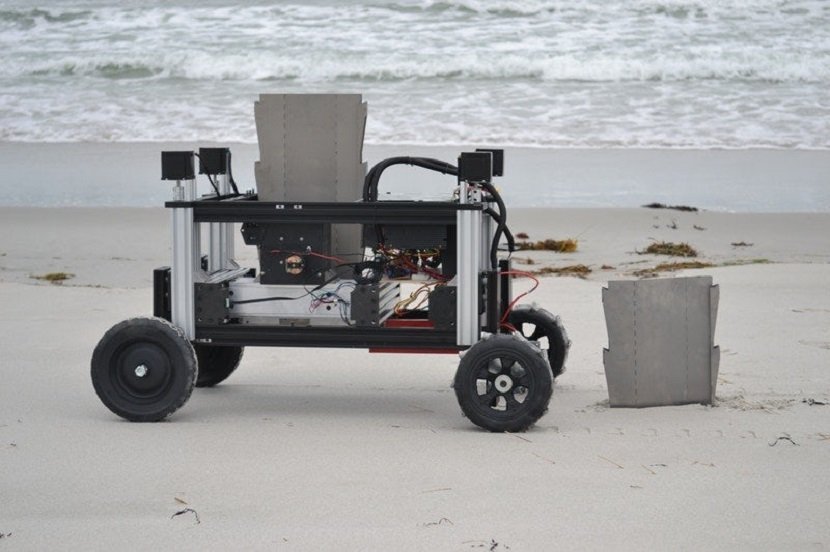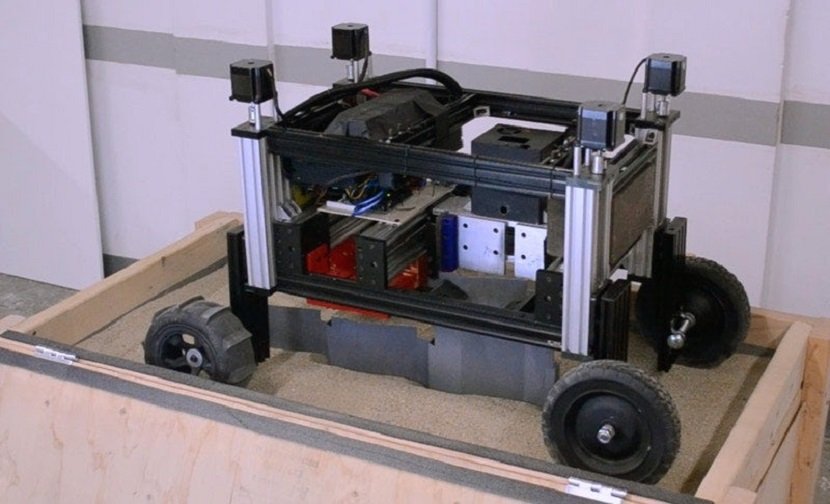Harvard University’s Romu Robot can carry and hammer pile sheets autonomously
Scientists have now developed a robot called Romu to perform a thorough job of carrying pile sheets which are used to hold the soil from eroding. Previously this job had to be done by human labor which costed both, time and money. Romu is a smart carrying machine which is developed by a team at Harvard University’s Wyss Institute. The robot is perfectly suitable to perform the task of carrying several pile sheets simultaneously to save time efficiently.
Romu works in a simple yet potent manner as it carries the piles to the area where they are to be dug into the soil to provide anti erosion provision and it holds the pile with its grippers located under its chassis and lowers the body to plunge the pile into the soil while hammering it so it could be dug deep and hold firm. When the pile resists to go further in the soil, Romu releases its grip and goes to the top again to repeat the process until it realizes that the pile has gone into the soil at the required depth.

The process is repeated in a way that one after another, all the piles that Romu carries are properly inserted into the soil while being interlocked with each other in form of wall. When Romu is out of the piles it is programmed to return to the base and refill its carriage to bring more piles to the required zone to continue the building process. Another smart and self-decisive action of Romu is the maintenance of level and balance by readjusting its wheel heights so that the pile is inserted in at a straight 90 degree position.

As the technology has recently been developed therefore, its scope is limited but the scientists believe that once completely developed, it could be organized enough to be linked with several robots and perform the duty together with the ability to sense the environment and deciding when and where to build the structure. Wyss Institute’s founding director, Donald Ingber says that the development of the sheet pile driving robot has enabled us to locomote the disaster preventing materials to the places where the manpower and other equipment were extremely tough to reach and that all these limitations are settled now considering that a very suitable alternative is available.
Source: Harvard University (via: New Atlas)